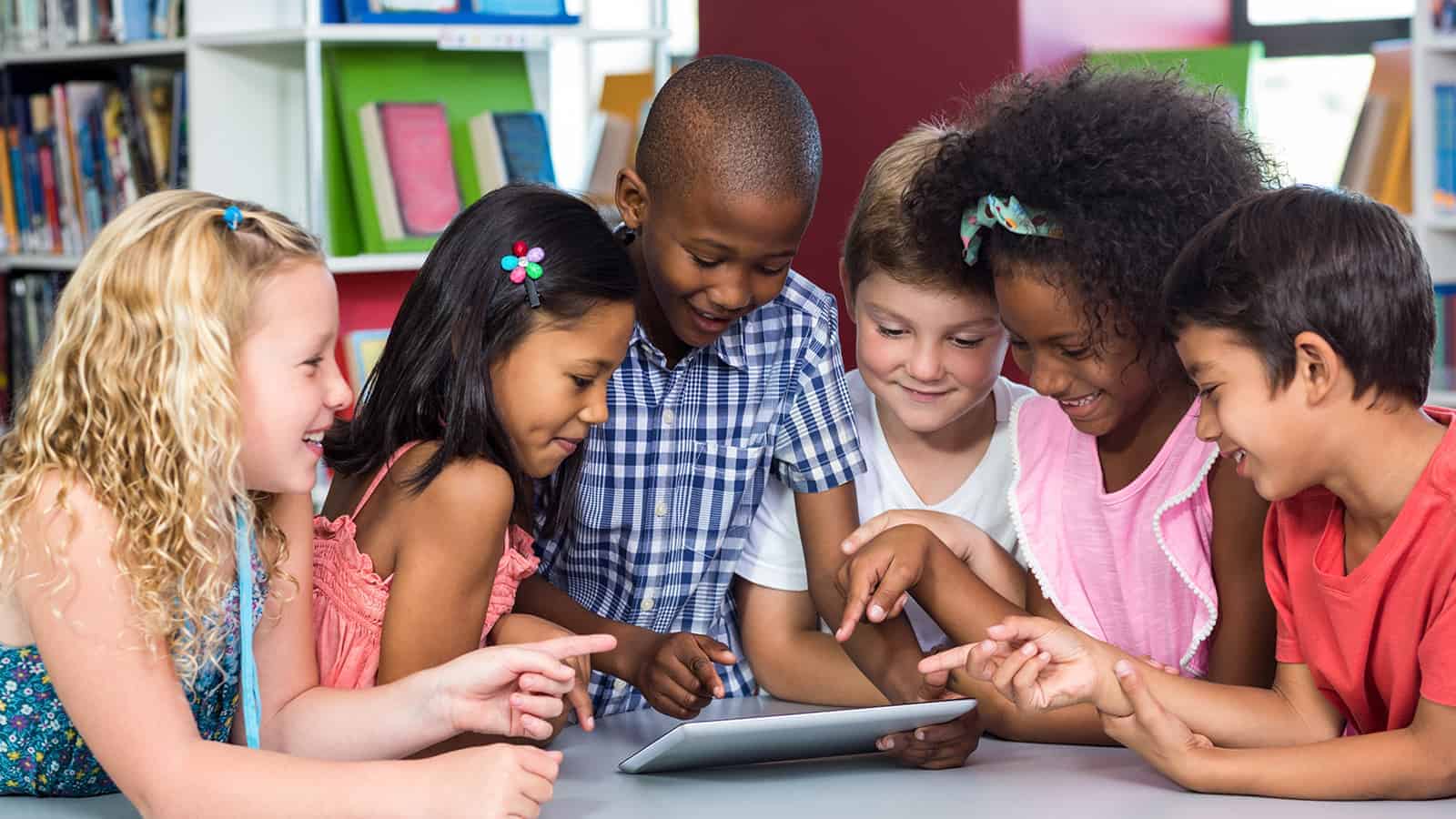Collaborative learning requires that children work together on group activities. It’s a fun way for them to learn and interact with others, and it’s beneficial for shy children. This type of learning plays a significant role in children’s communication and social skills.
Collaboration allows students to show their knowledge and produce assignments with others. This method is one of the most popular learning styles as it emphasizes teamwork and insightful collaboration. Children learn from one another and develop social skills along the way.
Learning groups should be small enough for everyone to participate in the same task. While there are many approaches to this learning method, peer collaboration is always the focus. Shy children might not look forward to this type of learning, but it’ll offer benefits they can’t get anywhere else.
You’ll want to ensure the shy children are comfortable and feel safe to share their knowledge. The more often they do this type of work, the better the benefits will help them. As they become more comfortable, you’ll see them flourish because it allows them to open up.
What Is Collaborative Learning?
Collaborative learning differs from regular group activities because students become an expert on all topics. With the old-style group projects, students focused only on their work section, rarely learning about their peer’s portion. Collaboration requires that students work together on all parts, creating a unified project that everyone understands.
It encourages students to think in-depth and come up with more elaborate projects than they would have alone. This type of learning shows students that working with others and communicating for the greater good can produce better results. It also teaches the importance of active participation and different learning styles, including visual, auditory, and kinesthetic.
Seven Reasons Why Collaborative Learning Works Best for Shy Children
Collaborative learning takes advantage of differences within the group, using their combined talents to explore the topic together. The children share insights, observations, questions, feedback, and other information throughout the assignment. With this, students learn from one another while developing experience and understanding.
1. Collaborative Learning Encourages Social Interaction
Shy children struggle with social interaction, but collaborating with their peers can help them. During the collaboration, they must work as a team with people of varying personality types. When shy children work with others, they learn to confidently share ideas and practice active listening, empathy, and respect.
As shy children develop strong social skills, it can help them establish and maintain relationships. The children will create new friendships with unexpected people and strengthen existing relationships. Collaboration can bring people together who may not have developed a relationship otherwise.
Additionally, this type of learning encourages shy children to engage with their peers. It helps them take on a more active role as they become interested in the group tasks. The children also learn to understand and accept different perspectives, further allowing them to connect with others.
Additionally, collaboration creates trust, helping children feel more comfortable opening up to their peers. As the children must rely on one another for success, they learn to trust each other, increasing morale.
2. Offers a Sense of Autonomy
Autonomy means that a child can act on their values, interests, and learning processes. When shy children are offered freedom in their day, they tend to thrive. It helps them learn, improves their self-esteem, and helps them understand diverse perspectives.
When children have a sense of autonomy, it helps them develop skills and take on a new mindset. They learn how to reason, appreciate different viewpoints, and debate. Autonomy promotes a sense of self-worth, self-respect, and self-knowledge.
Children need opportunities to be autonomous so that they can learn about themselves and the world around them. Shy children won’t always take the opportunities when they arise, so encouraging collaboration is the perfect way to do it. It allows them to consider alternatives and adapt their mindset to promote positive interaction.
3. Promotes Diversity
Appreciating diversity is essential in the world today. Collaborative learning allows children to interact and work with people from different backgrounds and beliefs systems. Shy children can use collaboration to learn respect and value new ideas and perspectives from others related to their culture or upbringing.
Collaboration encourages children to focus on open-mindedness and acceptance of others. Not only does promoting diversity help children right now, but it sticks with them throughout their life. They will go on to become adults who understand and respect all people.
The sooner children learn about diversity and accepting others, the better off they’ll be. As they interact with others, they can form meaningful friendships and relationships with people they can learn from.
Children will begin to understand that diversity is ideal in group settings because it allows for many different perspectives. Plus, they’ll feel more comfortable asking questions when they are used to variety in their life.
4. Encourages Enthusiasm
Shy children don’t always show enthusiasm. They tend to hide their feelings and absorb things from a distance. With collaborative learning, they’ll be more enthusiastic about the task at hand, promoting understanding and retention.
When children work together on the same task, it helps get everyone more involved. Even shy children will find themselves enjoying the experience of working with their peers. They’ll begin to show their excitement a little more as they see their group members doing the same.
Emotions are triggered by memorable events, so shy children are more likely to show enthusiasm when collaborating. Collaboration opportunities tend to be unique, and they promote positivity and excitement.
Children won’t only remember the activity and collaboration, either. They will also remember the information that went along with the memory. Since the information goes into their long-term memory, they’ll have a deeper understanding.
As children have fun learning together and teaching one another, they’ll enjoy the experience more. Children don’t always learn by reading, listening, or working alone, so it’s best to make it fun for them. Collaboration allows the opportunity for laughter, excitement, and fun.
5. Collaborative Learning Improves Oral Communication Skills
Shy children struggle with oral communication, so they often stay silent in the presence of others. However, through collaboration, they work on improving their communication skills and becoming comfortable speaking to others. They learn to share their ideas, explain concepts, and offer feedback to their peers.
The more often shy children practice communication with others, the better they become. Collaboration helps improve the child’s confidence, increases their attention, and promotes motivation. It also increases the child’s response levels when around other children.
6. Collaborative Learning Shows That Everyone Makes Mistakes and Teaches Them How to Work Through It Together
Shy children sometimes hold back because they are afraid of making a mistake. When they work with a group, they can see that other people make mistakes, too, and that it is okay. The collaboration will help them learn and practice working through challenging tasks.
The child will share their ideas and hear the views of others, formulating a plan that can overcome mistakes. As they think creatively to solve a problem, they’ll gain confidence and feel support from their peers.
Shy kids don’t always recognize that everyone struggles sometimes and that failure is essential to learning. By allowing them to work with others, they’ll see that working through failures makes them more intelligent. They’ll understand that working with others can help them grow further as they overcome a problem.
7. Improves Confidence and Allows the Child to Express Themselves
Collaboration with peers is a sure way to improve a child’s confidence. Shy children need all the help they can get regarding self-esteem and putting themselves out there. As the group uses teamwork to work together toward a common goal and supports one another, their confidence levels soar.
The children realize that they aren’t alone, and they have a support system in their peers, helping them feel better overall. The group members will encourage one another to share thoughts and discuss the assigned topic or assignment. As the child realizes they are a valuable asset to the group, they’ll feel confident enough to express themselves.
Once the child feels comfortable and confident in their collaboration group, it’ll inspire creativity. The child will take in the different views and ideas and come up with creative solutions. One suggestion in the group can inspire new ideas, and the shy children will feel confident enough to share theirs.
Final Thoughts on Reasons Why Collaborative Learning Works Best for Shy Children
Shy children have a hard time opening up to others, but collaborative learning can help. This type of learning will help build the child’s confidence and sense of self-worth. Plus, it’ll help them remember the information they learned and recall it later.
Collaborative learning promotes social interaction, oral communication, and many other beneficial things. If you know a shy child, consider putting them into a collaboration setting so that they can grow and develop. Before you know it, they’ll come out of their shell and contribute to discussions and solutions.


















